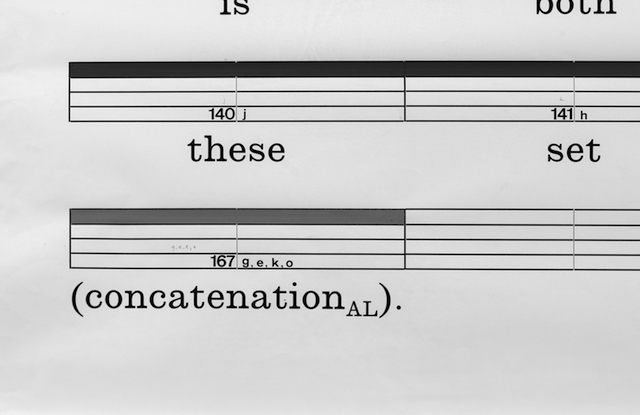The events in Paris of 1968 should be seen in the context of contemporary international protest movements against the depravities and absurdities of the Vietnam War. We do not remember 1968 as soix-ante-huitards. As our practice developed as Art & Language, we were not, however, bereft of a sense of the need for student self-activity in the conditions we faced at Coventry College of Art and other art schools before and after 1969. There was indeed a class dimension to the origins of this practice – a material and social dimension. American Modernism had produced a discourse and a discipline that seemed essentially learnable and teachable irrespective of the social background of those who tried to make something of it and with it. This was in marked contrast to the European Modernism of a quasi-natural (ie socially privileged, class-based) sensibility.
What became Conceptual art could be described as an almost fully integrated negation of the discourse of Modernism. The transmissibility of the discourse of Conceptual art was more or less accepted as a necessity by Art & Language and many of our early Conceptual art coconspirators. Art & Language’s critique of Modernism – certainly in its European form – refused the various discourses of authenticity and of the romantic stereotype of the artist as hyperindividual that had long penetrated art schools as an unchallengeable creed. As a consequence, Art & Language adopted a degree of anonymity – to a greater or lesser extent – as various contingencies allowed. The social practice of teaching and learning, which was essential to the development of Art & Language work after the first publication of the journal Art-Language in 1969, sought to abolish or diminish the dichotomous hierarchies that were associated with institutions and particularly with art schools, where what had begun as a kind of individualistic radicalism had been transformed into an arbitrary and conservative orthodoxy that students refused at their peril. They refused.
The revenge of this conservatism was not long in coming. Art & Language had managed to get an art theory course installed with some prominence in the curriculum and had extracted various other concessions from the authorities. The Gesamtkunstwerk of Conceptual art discourse was able to reproduce itself for a couple of years or so between 1969 and 1972. In 1972 all the part-time staff who had been teaching this apostasy at Coventry were summarily dismissed.
But what of Conceptual art and its critique of the institutions of art and
of the social world that had given rise to them? It was shortlived; not ended in vengeful acts by the authorities, but by rapid co-option and assimilation into the light of institutions themselves. (Of course, it could be said that Conceptual art which embodied institutional critique as its raison d’être was always liable to such rapid assimilation.) By the middle of the 1970s, work whose self-description prominently included cultural critique had begun to sidle closer to the social and political space of the management.
If during the late 1960s the formal announcement of the victory of capitalism was (and seemed) only a remote possibility, the economic recession and the errors and dissuasions of the 1970s mutated so as to contrive the triumph of neoliberal capitalism. With some notable exceptions, the artist and his new best mate/boss, the curator, have become fully professionalised in practices that put together generic art products in traditional and installational forms. Both have learned to put their newly entrepreneurial shoulders to the ideological wheel of the neoliberal dispensation. As they have done so, we have seen them set up monuments that can be understood as no more than its passive reflection.
Resistance is not, however, unimaginable. It will take the form of small and possibly malingering criticism and negation. This was in fact always the case. But once, it was easier for artists to be afflicted by the delusion that they are somehow centre stage in the struggle for material and social change.
Mais oú sont les neiges d’antan? Elles demeurent, on l’espère, dans quelques lieux sombres.
From the May 2018 issue of ArtReview
